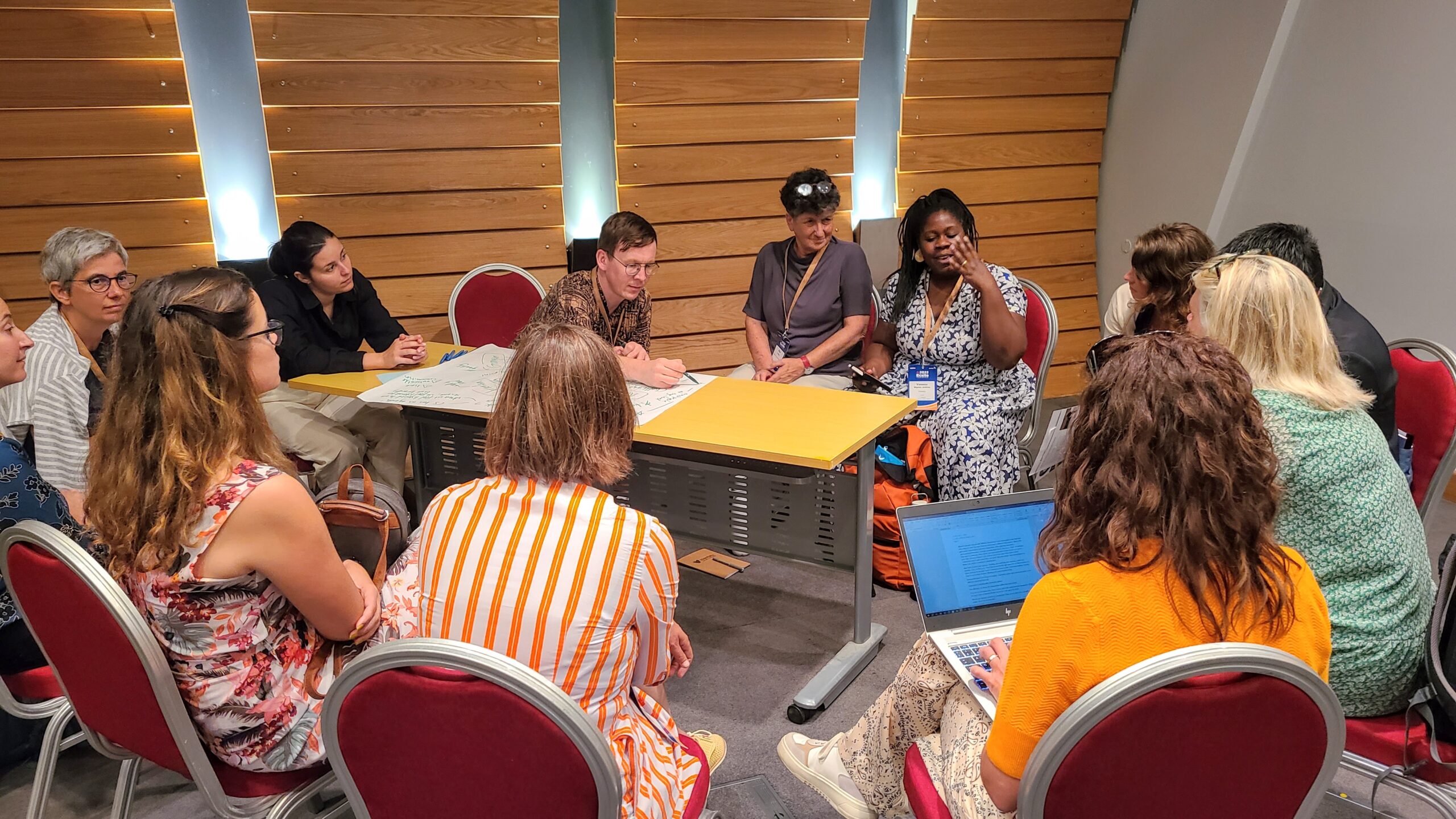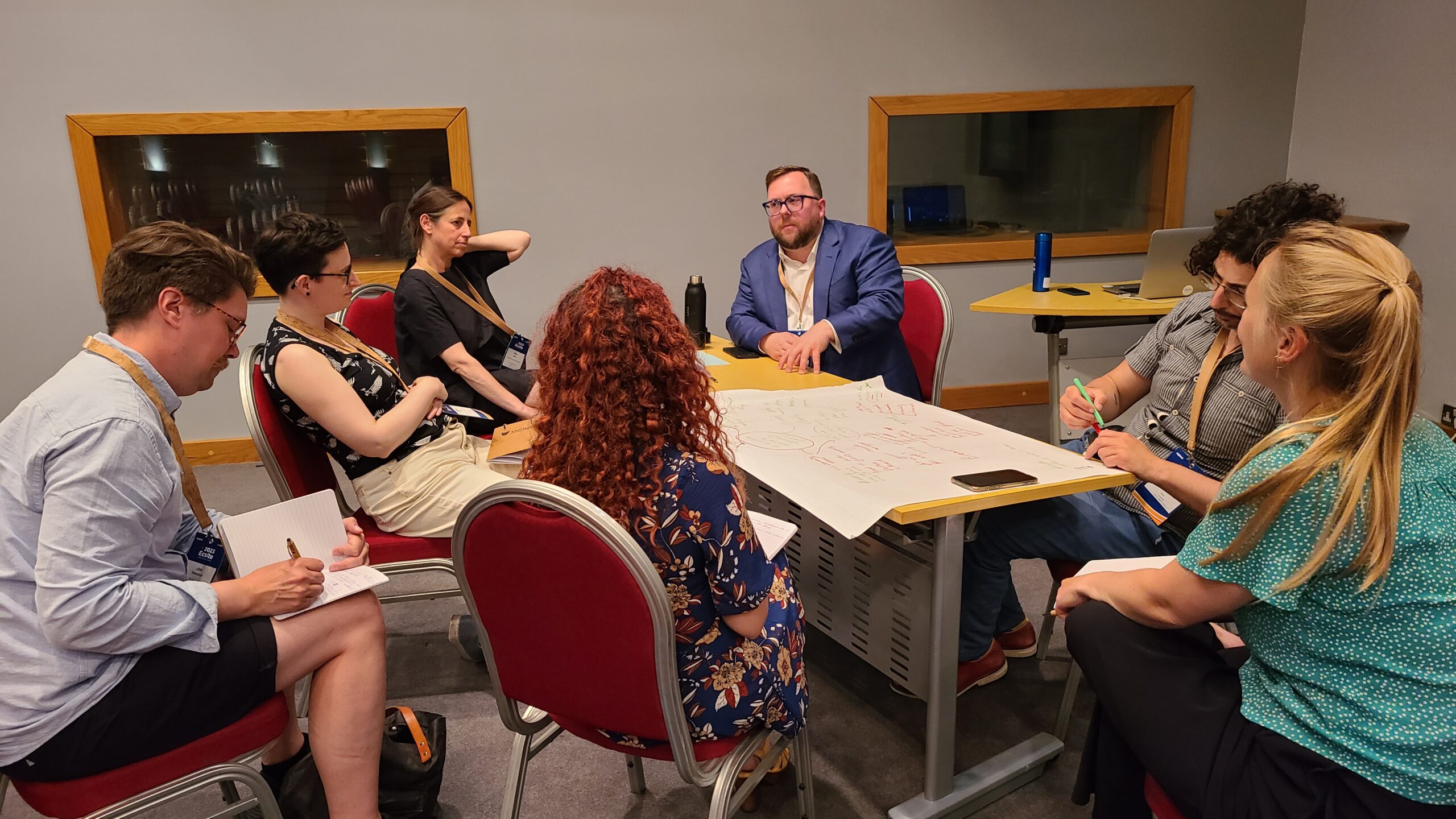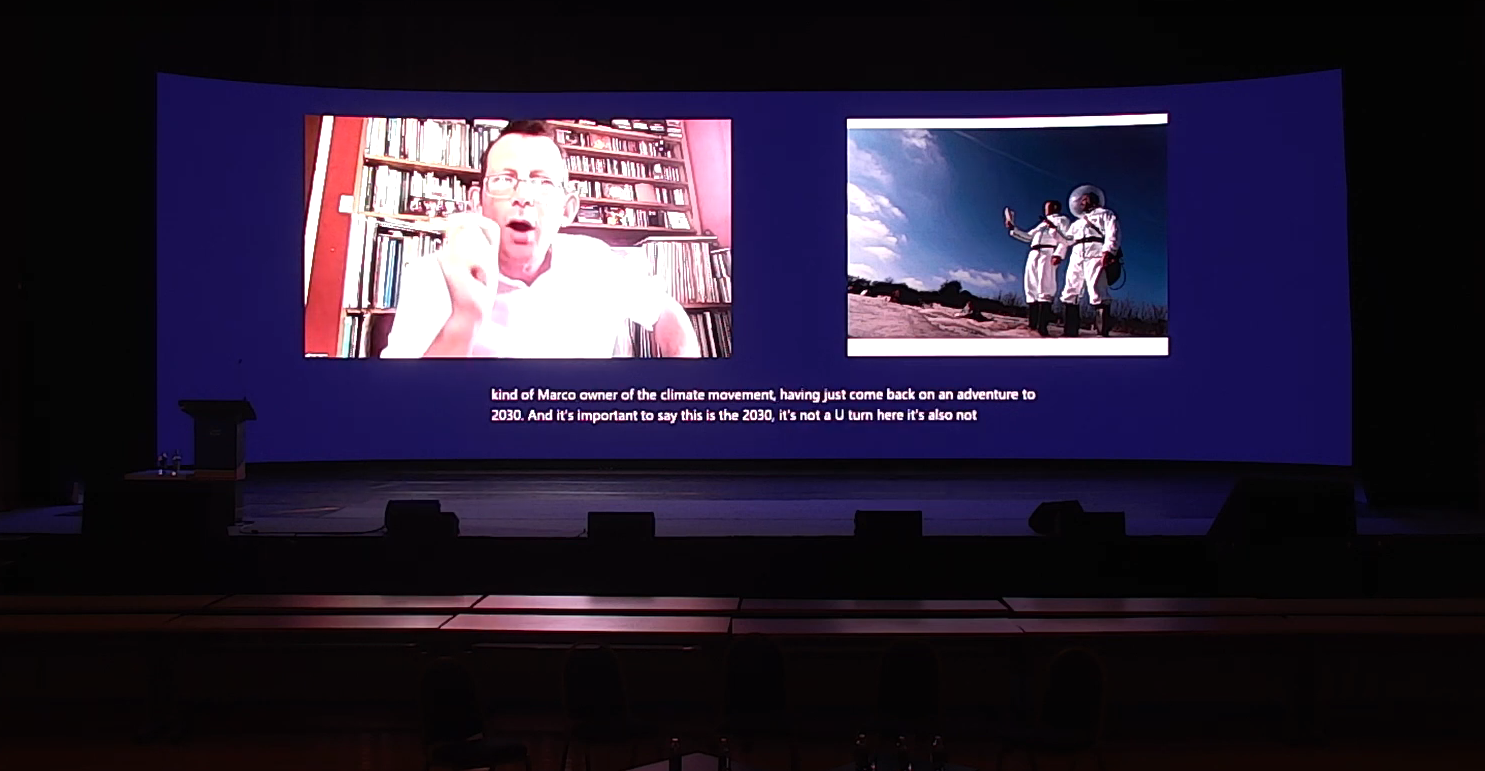Blog post and photos by Liz Crocker

Figure 1 View from the rooftop of the Mediterranean Conference Center.
Finding ways to ensure communities have access to the benefits of science and can mobilize science to solve their local priorities is currently a global topic of conversation amongst scientists, institutions, educators, museums, and communities. Last month, I had the opportunity to travel to Valletta, Malta for the ECSITE conference, which is the European network of science centers and museums, to present about how Thriving Earth Exchange is addressing these issues and learn how Europe is responding.
Malta is an island in the Mediterranean a short ferry ride from Sicily. The capital city Valletta is a city layered with history – its stone sidewalks carved into steps as the streets wind up steep hills packed tightly with apartments, ancient cathedrals, shops, and gardens. Nestled along the eastern coast of the city is the Mediterranean Conference Center. Once the Sacra Infermeria (Holy Infirmary) that served as a hospital and lodging for knights and pilgrims starting in the 1500s, it is now a place for gatherings such as ECSITE. The juxtaposition of ancient high stone ceilings created to house medieval medical advances and modern projection screens for PowerPoint presentations about new discoveries felt appropriate for discussing ways that we can connect the values, concerns, and culture of communities with scientific solutions. Below are a few takeaways.

Figure 2 Michael Creek leads a discussion about engaging communities and the complications of how we define them.
Community is not just something that happens by chance nor is it a static thing. Community is constantly made and remade by active participants as part of a creative process.
Defining Community Is Complicated
One of the panelists at our session, Michael Creek of Stickydot, led a discussion about the complications that can arise when an institution or scientist assumes a group is a community without asking. At times, we may look at a demographic that seems to share certain characteristics such as regional proximity, class, ethnicity, language, religion, historical relationships, etc. and assume that they must therefore self-identify as a connected group. Yet, people are more complicated than that. It takes more than just sharing a few values, demographics, or experiences to make community. As Mary Parker Follett noted over a hundred years ago, community is not a noun. It is a process. Or rephrased as many social activists define it today, community is a verb.
What this means is that community is not just something that happens by chance nor is it a static thing. Community is constantly made and remade by active participants as part of a creative process. Scientists, museums, non-profits, universities, and other organizations must spend time engaging in bi-directional dialogue with groups and really listening to understand the dynamics of who they wish to work with and why. We cannot just assume who is part of a community. We must let them self-identify and reveal those complexities. And, over time, we might even start to be part of that creative community-making process with them.
Figure 3 Screenshot of Rob Hopkin’s keynote speech. Click to view the YouTube video recording.
Create a Shared Vision of Hope
Rob Hopkins gave one of the best keynote talks I’ve seen in years, and it was all done virtually. In his presentation, he invited the audience to imagine that he had a working time machine that had traveled to the year 2030. He had returned with photos, audio recordings, and stories of communities that acted together to change their local areas in ways that were meaningful alternatives to the dire futures climate change scientists warn us about. For example, one neighborhood had turned their street into pedestrian-only and their sidewalks were bursting with flowers and trees. Soundscapes of birds, wind through the branches, and children playing revealed a sanctuary in the middle of the city. We were invited to explore and imagine what our own communities could be like in 2030.
Rob then revealed that all of the examples he had given were real actions happening today. We don’t need impossible technologies or long timelines to achieve that kind of change. We have the ability today. But hope flourishes when we are building towards something positive that feels achievable. Imagining together was a powerful way to create longing for a future that felt possible. As we think about ways to grow community science efforts and embed them into structural changes, imagining together could be a potent tool. What if instead of pointing out what is missing or wrong, we instead start with collectively sharing an experience of examples that get it right?

Figure 4 Cristofer Nelson, CEO and President of ASTC, leads a discussion about institutional change and buy-in for community science.
It’s easy to get so embedded in our own personal experiences that we forget the challenges and solutions we’ve worked on may not be universal.
Global Cross-Cultural Conversations are Necessary
It’s easy to get so embedded in our own personal experiences that we forget the challenges and solutions we’ve worked on may not be universal. Even when we expand our conversations to regional or national contexts it is still limited. Global cross-cultural conversations are deeply revealing about both the similarities but also the differences we all face in making community science an active part of addressing community priorities. During our session, we split into breakout groups to discuss how attendees were working on different aspects of community science. Cristofer Nelson, CEO and President of the Association of Science and Technology Centers (ASTC) and long-time partner with Thriving Earth Exchange, moderated a conversation about institutional buy-in and structural barriers.
Not surprisingly, there were common threads related to the challenges of funding, finding reliable collaborators, spending staff time on something not seen as a core mission, and so on. But at this discussion and many others I attended at ECSITE, when people began discussing differences something wonderful happened. Our horizons expanded as we learned together about new and different ways of approaching community science and relationships. Light bulbs lit up throughout the rooms as people connected a shared story to their own contexts. Rather than approaching culture as a barrier, it became a possibility. Just as the variation in biology allows species to adapt to innumerous niches, so too can culture provide ways to creatively accommodate the constant flows and tensions of our world. Working together, we can collaborate with communities in ways that allow for the full expression of who they are and what matters to them. And that starts with listening and learning across our differences in these global contexts.


1 Comment
Rob OMalleyJul 13, 2023 at 11:03 AM
Great piece Liz, thanks for sharing!